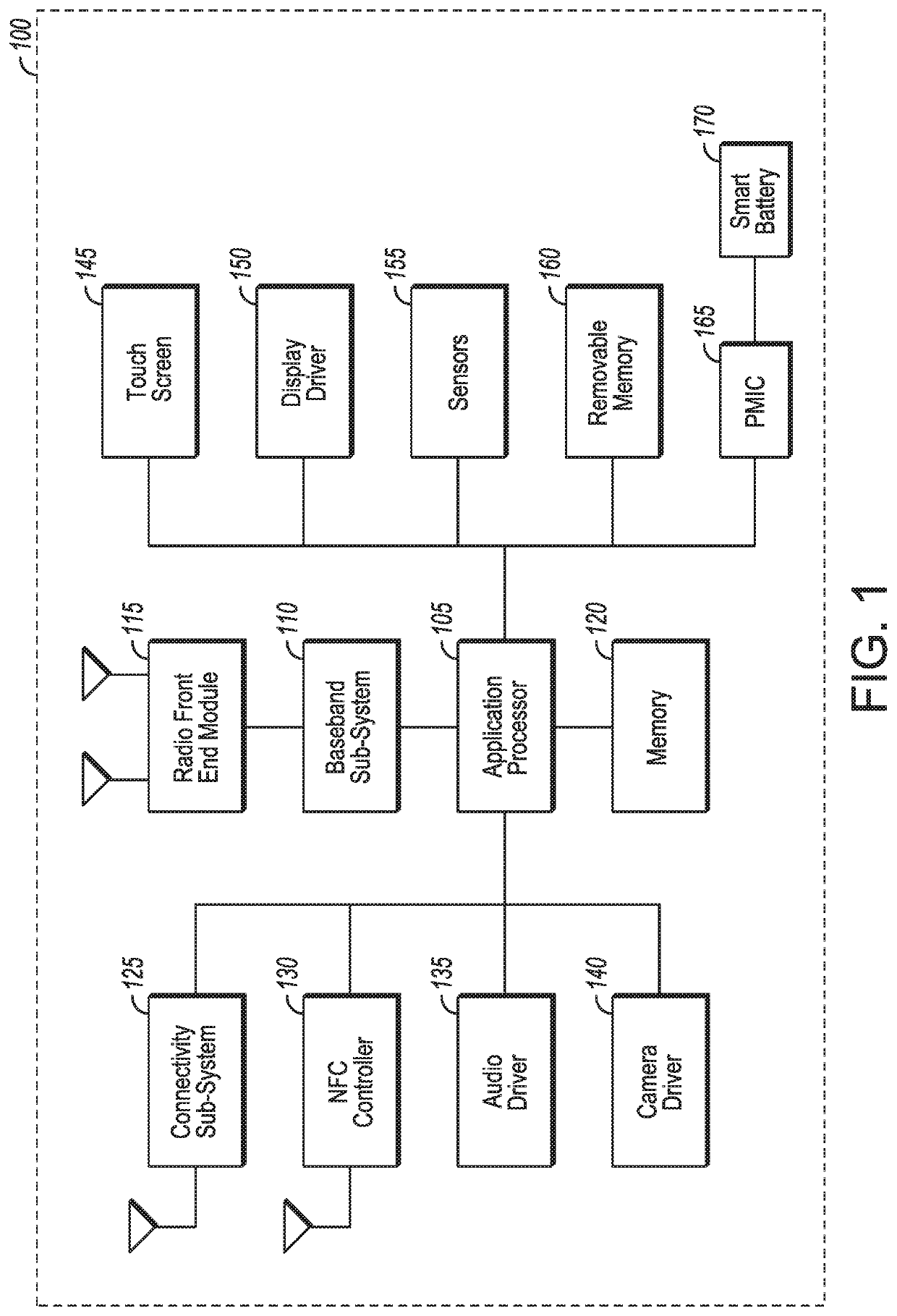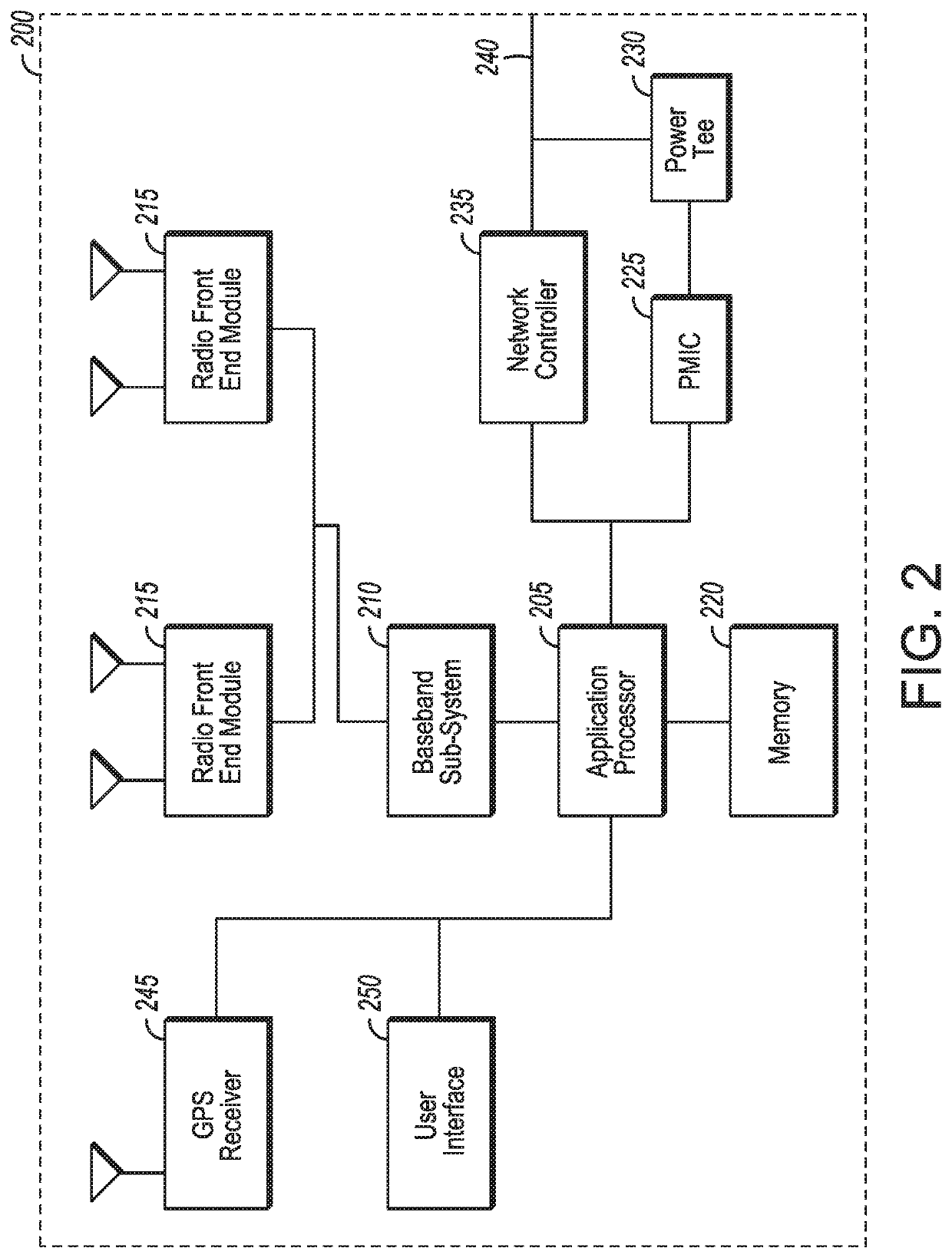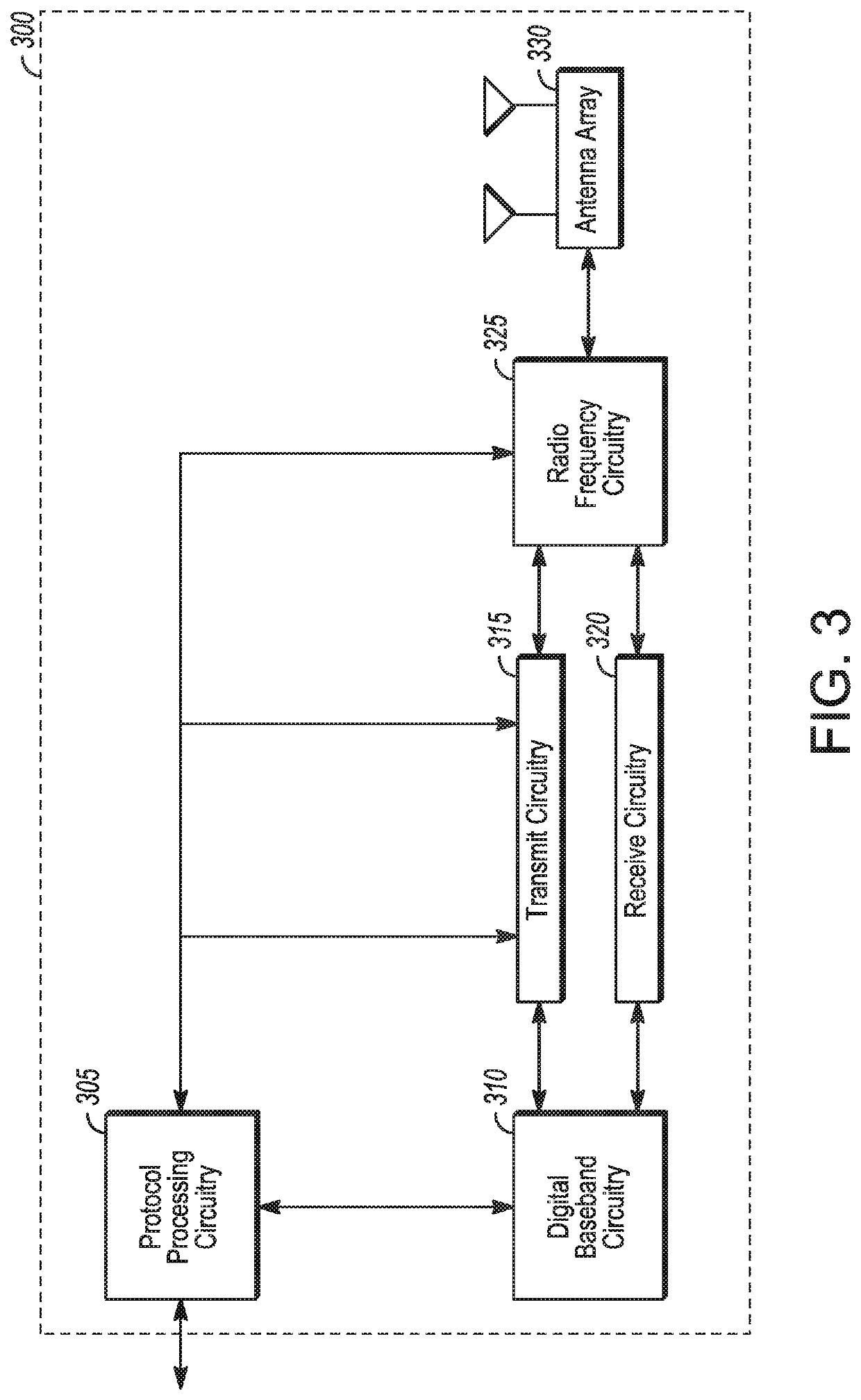System and method using collaborative learning of interference environment and network topology for autonomous spectrum sharing
a technology of interference environment and network topology, applied in the field of radio access networks, can solve the problems of increasing congestion in the network, preventing dynamic adaptation to supply and demand, overloading the spectrum,
- Summary
- Abstract
- Description
- Claims
- Application Information
AI Technical Summary
Benefits of technology
Problems solved by technology
Method used
Image
Examples
example 1
[0223 is an apparatus of a collaborative intelligent radio network (CIRN) node, the apparatus comprising: processing circuitry arranged to: identify whether the CIRN node is within transmission range of a source node of a transmission and within reception range of a destination node of the transmission, the source and destination nodes in a neighboring network from a CIRN network of the CIRN node; schedule a relay of the transmission to the destination node in response to a determination that a relay mode is to relay the transmission, wherein the schedule takes into account performance measurement of the CIRN network and collaboration feedback of performance measurement of the neighboring network; and a memory configured to store at least one machine-learning algorithm to learn how transmissions of the CIRN node impact transmissions of the source and destination node, minimize interference in the neighboring network, or discover and determine topology of the neighboring network.
[022...
PUM
 Login to View More
Login to View More Abstract
Description
Claims
Application Information
 Login to View More
Login to View More - R&D
- Intellectual Property
- Life Sciences
- Materials
- Tech Scout
- Unparalleled Data Quality
- Higher Quality Content
- 60% Fewer Hallucinations
Browse by: Latest US Patents, China's latest patents, Technical Efficacy Thesaurus, Application Domain, Technology Topic, Popular Technical Reports.
© 2025 PatSnap. All rights reserved.Legal|Privacy policy|Modern Slavery Act Transparency Statement|Sitemap|About US| Contact US: help@patsnap.com



